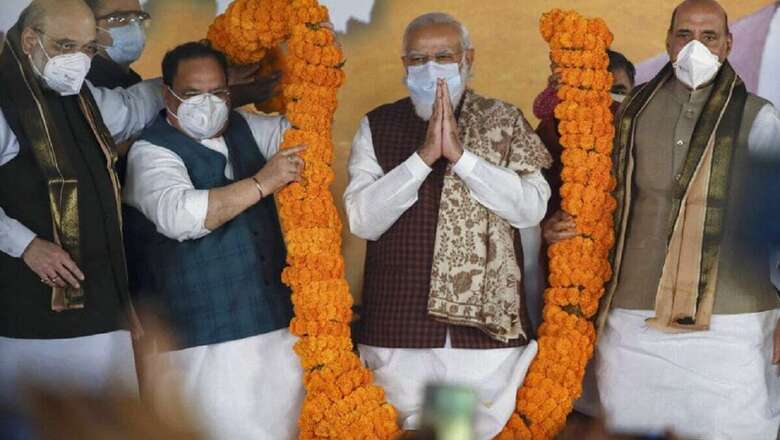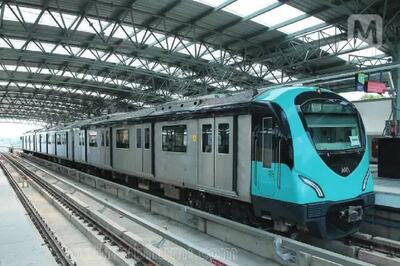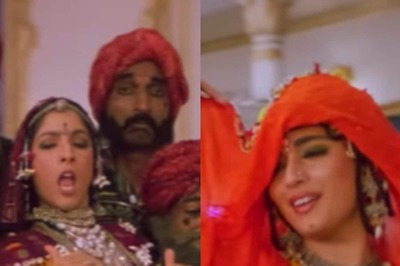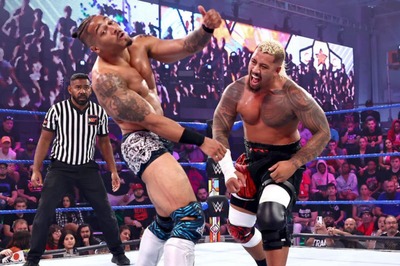
views
In the overestimation and underestimation of ideas in Bihar, the message from the state, which seeds a political narrative for the country every election is that “badlav” doesn’t necessarily mean change of governments.
It can very well mean re-alignment within the same political formation. The message from Bihar is loud and clear – caste remains the bulwark but class can emerge simultaneously.
Prime Minister Narendra Modi has emerged as a unifier, rising above caste and giving birth to a new class, one that received all economic benefits from the Centre even when the state deserted it. It is here that Modi became the deciding factor in Bihar at a time when anti-incumbency and rampant joblessness had almost shown Nitish Kumar the door.
Every move on the Bihar political chessboard was played by the Prime Minister. He was two moves ahead of his political counterparts and Kumar, his ally. If women were angry with prohibition and bootlegging, they were ready to have faith in Modi as they did in 2019. If migrants said the CM abandoned his own, they spoke about how the Centre ensured food on their plates.
The boost the BJP gets from Modi’s personal political capital has taken the party beyond the finish line in several elections over the past few years and it once again proved to be the final push in what otherwise seemed to be a cliff-hanger.
A day after the BJP-led National Democratic Alliance (NDA) retained power in the Bihar Assembly elections, Modi addressed party workers in Delhi. He said the BJP was the only party to increase its seats, despite being in power for three terms — the BJP managed to garner 19.5 per cent votes in this election.
To substantiate Modi’s popularity over Kumar, consider this: 52 per cent respondents in the Lokniti-CSDS survey were satisfied with Kumar’s performance while 61 per cent said they were happy with the work of the Modi government.
Over 20 lakh workers from all over the country had made their way back home after spending more than a month cooped up inside hostile camps, away from their families. While this may seem a small fraction when compared to more than seven crore voters in the state, the cascading effect of their electoral choice ended up influencing close to six per cent votes.
This class of voters was especially unhappy with Nitish Kumar for two reasons. One, their chief minister had deserted them by barring their entry into the state and most of them said they had not received any state assistance after they returned home. On the other hand, most of them had received money and food grains that the Centre had promised.
An entire village in Paliganj near Patna had its migrants working in Daman. One of them said, “It has been six months since we came back. There is no work. We had voted for Nitish Kumar in 2015, but this time, after what he did, we had to face hunger and abject poverty. He told us that electricity bills will be free — should we pay bills or fill our stomachs? Chief ministers of Jharkhand and Uttar Pradesh had called back their people and what did our chief minister do? We spent Rs 4,000-5,000 from our own pockets to reach home. The CM did nothing for us.”
“Was the pandemic only in Bihar? Did other states not have the coronavirus? We received food grains and money in our bank accounts that Modi ji had promised,” he added.
India had imposed a nationwide lockdown on March 24 aimed at curbing the spread of coronavirus, leaving crores of migrant labourers stranded.
An indication of the sentiment among migrant workers towards Kumar may also be drawn from a video that had surfaced on April 15. “We want to convey this to you that talk to PM Modi and arrange special buses to ferry us to Bihar… open your ears and listen to us carefully… otherwise, the ground beneath your feet will sink…” said a group of workers from Bihar in a video posted on social media. They were stranded at the Badarpur border in Delhi.
A February 2020 study by the International Institute for Population Sciences concluded that more than half of the households in Bihar are exposed to migration to more developed places in India and abroad. Added to this, the 64th National Sample Survey stated that 22 per cent of the migrants are from OBC households and 19.3 per cent belong to scheduled castes and scheduled tribes. This includes skilled migrants.
Also, in a first, Kumar was at the risk of being deserted by his undivided constituency of women voters in the current Bihar elections, who could have possibly opted to go back to traditional forms of electoral choices.
On April 1, 2016, Bihar was declared a dry state. The JD(U)-led government enforced a five-year jail term for first-time offenders. In 2018, the law was amended to introduce a fine for first-time offenders. The sweeping victory of Kumar in 2015 was attributed to the support of women who felt addressed by the JD(U) leader’s push for prohibition. However, the factor likely worked against him this time.
A woman voter in Muzaffarpur said, “Liquor is still being sold illegally in the state. Those selling it are getting prosperous by the day and those consuming are getting ruined. Alcohol is being sold under wraps and consumed in every other house. Families are being devastated. Police are party to this as well. They allow alcohol to infiltrate borders. My son earns and wastes all the money in drinking. There has been no alcohol ban.”
In 2015, Bihar elections saw the highest female voter turnout since 1962. The percentage of women who had voted then was 60.48 per cent against 53.32 per cent men. Experts had opined that women had single-handedly caused a 7 per cent vote swing in favour of Kumar.
This time, however, some women seem to have gone back to their families to decide on their electoral preference as they also saw their husbands and sons getting stuck in cities struggling with hunger.
“I have received money in my bank account that the Centre has promised. I will go for who my son wants. Our family has 40 votes, all of us will vote for one party,” said the same woman.
But it was Modi’s welfare programmes targeted at women that saved the day for Kumar. In these elections too, the female voter turnout was 59.69 per cent, 5 per cent more than men. The third phase, which saw the NDA make substantial gains, saw an 11 per cent higher turnout of women. Several seats saw women turnout as high as 70 per cent.
The Centre launched one of the largest cash transfer schemes to move money into the Jan Dhan accounts of women in April. Over Rs 30,000 crore were deposited into the accounts of women. Besides this, over Rs 5,000 crore were deposited into linked LPG connections. Additionally, Rs 500 was transferred into women’s accounts for three months.
The Centre also increased MGNREGA wages to Rs 202 a day from Rs 182, which benefitted 13.62 crore families. Ex-gratia of Rs 1,000 was provided to 3 crore poor widows, poor disabled and poor senior citizens.
On National Highway 47 near Darbhanga, there were several woman who said the PM was feeding them. “Modi kiya hai, khana bhejwaya hai, har cheez kiya hai, pait bhara hai, jo dekh raha hai humko usko vote milega (Modi is feeding me, he has done everything for me, the one who takes care of us will get our votes).”
Not very far away, a woman in her late 60s was far more vocal in her support. She said, “Modi gave me pension, I get money in my account, I will give him 10 votes to win.”
The interests of the farmers were also taken care of with the Centre depositing Rs 2,000 to them in the first week of April under the PM Kisan Yojana. This benefitted 8.7 crore farmers.
Kumar’s image of ‘sushasan babu’ also seems to have become stale in the eyes of the young voter. Bihar’s demands have moved beyond the chief minister’s age-old poll promise of bijli, paani aur sadak. Aspirations of a young Bihari have now moved to economical needs.
The structure of Modi’s campaigns also displayed the confidence of the Prime Minister in his political capital. In a carefully crafted tour programme, the BJP deployed the PM more in the not-so strong areas of the BJP-JD(U). Modi began his rallies in Sasaram followed by Motihari, Forbesganj, Saharsa, Bagah and Samastipur, areas where the NDA is weak. His speeches centred around his government’s aid to the Bihar CM to help develop the state and a promise for more.
This time around, it was the BJP that proved to be the heavy hitter, managing to add 21 seats to its 2015 tally of 53, taking it to 74. Meanwhile, the JD(U) saw its seat count erode markedly, having only managed to bag just 43 this time around – a drop of 28 seats from its 2015 figure.
The conventional wisdom that India votes differently in state and Lok Sabha polls has been defied in Bihar with Modi emerging as that one unifying force. The message from Bihar is that Modi could well be a deciding factor even in the Assembly elections.
Read all the Latest News, Breaking News and Coronavirus News here



















Comments
0 comment